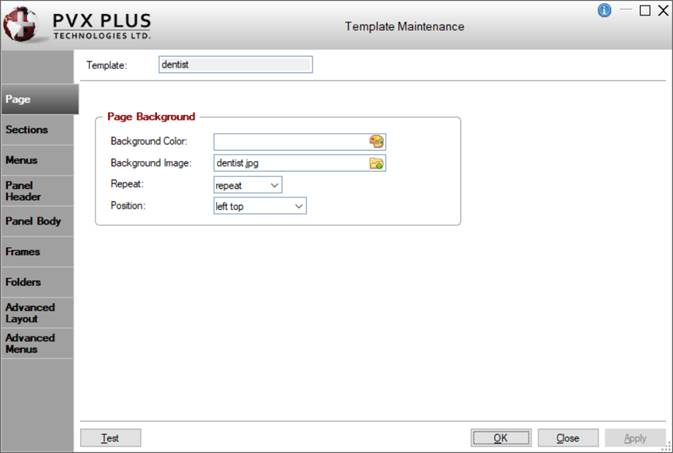
|
Template Definition Edit Utility |
The Template Definition Edit Utility displays the style sheets and text files (also known as control files) that are used to define a template. Style sheets control items such as font, color, backgrounds, etc., allowing the underlying HTML to be rendered differently by simply changing the style sheet. Control files (file suffix of .tpl) reside in the templates directory. By default, the normal template files reside in a sub-directory called default.
For a list of the template files used by iNomads, see Template Directory Structure/Files.
Using this utility, you can load, edit and save these template files as required. It is invoked by using any of the following methods:
|
Location |
Method |
|
From the PxPlus IDE Main Launcher |
Expand the Web Deployment category and select iNomads Setup to invoke the iNomads Setup window. From the Template drop box, select a template, and then click the View/Edit files button. |
|
From a Web browser |
Launch iNomads from a Web browser. From the iNomads Application Launchpad window, invoke the iNomads Setup window by either clicking the Admin button or selecting admin from the Transaction drop box. From the Template drop box, select a template, and then click the View/Edit files button. |
|
From the PxPlus Command prompt |
Invoke the iNomads Setup window by entering the following command: RUN "*plus/inomads/admin" From the Template drop box, select a template, and then click the View/Edit files button. |
The Template Definition Edit Utility displays with the name of the selected template shown in the title bar (i.e. default). The template style sheet (style.css) is initially opened, but a different template file can be selected from the Template Definition File drop down list.
This utility consists of the following:
|
Template Definition File |
Drop down list of the style sheets (style.css) and control files (file suffix of .tpl) used to define the template. Files marked with an * (asterisk) come from the default sub-directory of the templates directory. When you edit any of these marked files and then click the Save button, the * asterisk is removed, since the file has been customized. |
|
Revert to Default |
Returns the selected file back to its default state, which removes any customized changes previously entered. |
|
Save |
Saves the changes to a copy of the selected template file that is automatically created and stored in the template-specific sub-directory within the templates directory. |
|
Close |
Exits the Template Definition Edit Utility. If any unsaved changes are detected, you are asked if you want to save them. |